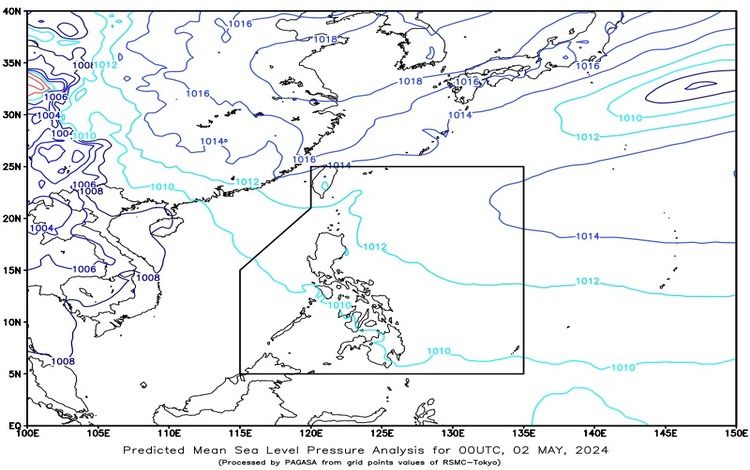As the day dawns on May 2, 2024, the Philippines finds itself under the influence of easterlies, stirring up partly cloudy to cloudy skies across Metro Manila and the entire nation. The forecast predicts isolated rain showers or thunderstorms, largely due to the presence of these easterly winds combined with localized thunderstorms. This weather pattern is typical during this time of year, characterized by the interaction of warm tropical air masses and prevailing winds from the east.

Impacts and Precautions
With the possibility of thunderstorms looming, there’s a risk of flash floods or landslides in susceptible areas. Residents are advised to stay vigilant, especially in low-lying areas and near steep slopes. It’s crucial to monitor weather updates and heed warnings from local authorities to ensure safety and minimize risks.
Wind and Coastal Conditions
In Northern Luzon, expect light to moderate winds blowing from the southeast to south, while the rest of the country will experience light to moderate winds from the east to southeast. Coastal waters are projected to be slight to moderate, with wave heights ranging from 0.6 to 2.1 meters. Mariners and fishermen should exercise caution and consider postponing maritime activities if necessary.
Temperature and Humidity Extremes
Looking back at the past 24 hours, temperatures fluctuated within a considerable range. The minimum temperature recorded was 26.8°C at 6:30 AM, while the maximum peaked at 36.5°C around 3:00 PM. Relative humidity levels also varied, with a minimum of 44% at 3:00 PM and a maximum of 75% at 5:00 AM. These fluctuations underscore the dynamic nature of our tropical climate, highlighting the importance of staying hydrated and seeking shade during the hottest parts of the day.
Tides and Astronomical Information
For those residing in Metro Manila, tide times are significant for coastal communities and maritime activities. Today, low tide occurred at 12:09 AM, reaching a level of -0.22, while high tide is expected at 03:34 PM, peaking at 1.08 meters. Understanding tidal patterns is essential for coastal planning and navigation, ensuring safe passage, and mitigating the risks associated with fluctuating water levels.
